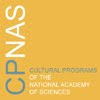to comment on this post, click on "comments" below
to return to main page go to www.visualcultureandbioscience.org
From: Jill Scott
Date: Mon, 5 Mar 2007 16:54:46 -0500 (EST)
Hello all-tonight I wanted to check in and post some of my reactions to these questions-but as I am traveling this week, I promise to be more present in the discussions, later in the week.
1) What role do picturing practices play in your discipline of “knowledgeproduction?”
I don’t really agree with the term "picturing practices" as I see my roleboth as an art and science context provider (www.artistsinlabs.ch) and as an"art researcher" working in neuroscience (www.e-skin.ch) who is challenged byboth the differences and similarities between visualization, illustration,simulation and interpretation. Although many "art researchers" prefer to definetheir works as interpretations of scientific research, I actually think thatthe most controversial and reflective practices often sit in the fuzzyboundaries between the definitions of these terms. These boundaries are furtherblurred by the fact that reductionist methodologies in science (includingpsychology and neurology) are currently under great scrutiny. Meanwhile the"art researchers" (including me) are struggling to find alternative ways toquestion or be inspired by scientific inquiry or even construct a "proof oftheory" rather than replicate empirical-based methods. Perhaps "knowledge production" in both art and science has been very culturally situated, but thismay not be the case in the future!
2) How have your perceptions and attitudes of mind been challenged by currentdialogueswithin the “Art-Sci” arenas?
It seems that "art researchers" are led through scientific discourses based ontheir own trajectories rather than fashionable discourses. My interest hasalways been the human body. Once in 1995, I conducted a great deal of researchand visited may labs for my practice based PHD ("Digital Body Automata"(ZKM)about the impact of biotechnology on the human body. Since then my interestgrew to include artificial intelligence (sensory perception), neuroscience(particularly cross-modal interaction) and environmental science (embodiment).Indeed this trajectory, has led to big shifts in attitudes, one which shouldreflect the impact of science on society and the need to create technologieswhich can actually help people.
3) What role have new imaging technologies played in your conceptualizations of visual modeling or artistic application?
New imaging technologies have played a great role in my own practice, includingthe construction of interactive interfaces for the public to unravel linkednarratives. As I was interested in interactive media, I often simulatedcognitive relations with 3D animation. In the last three years, visualmodelling has played an important role for me in designing mobile prostheticsfor visually handicapped people. Currently, I have a commission for a lab based in Neuromorphology (Uni Zurich) to build a mediated sculpture. This lab givesme "hands on" access to many visualization methods (i.e. SEM) all that produceexceedingly beautiful images. This beauty is in itself very problematic and a deep challenge for any artist.
to comment on this post, click on "comments" below
to return to main page go to www.visualcultureandbioscience.org
Subscribe to:
Post Comments (Atom)

No comments:
Post a Comment